When it comes to achieving the smile of your dreams, there are numerous treatment options available to suit all preferences and requirements. Despite the range of procedures offered by dentists across the country, the UK has seen a rise in the number of people attempting to treat their teeth at home in recent years. These treatments, which can be easily found online, are often trends or amateur techniques, meaning that they are almost always ineffective, and often very dangerous. Read on to explore these dental brace fads that you need to be wary of, and be sure to contact our practice for all dental procedures.
DTC Braces
Teeth braces remain a popular and effective dental treatment for children, teenagers, and adults, but if you already have insecurities regarding your smile, then wearing metal braces for months on end may be the last thing on your mind. Despite the range of invisible braces, and other alignment treatments, available, more and more people are turning to online resources and tips in their efforts to achieve the perfect smile.
One particular alignment treatment that has gained rapid online popularity is the creation of direct-to-consumer (DTC) aligners. This process involves patients sending self-taken photos of their teeth to a DTC aligner company for evaluation, and completing an at-home kit to take impressions of their teeth to be used in the creation of aligners. The patient will then receive custom-made aligners in the post.
Quick, convenient, affordable - and a waste of time and money. This treatment comes with a range of issues, including:
No Physical Examination
Prior to any orthodontic treatment, it is essential for a patient to have a complete clinical assessment to evaluate which treatment is the best for them, which is not offered by any DTC companies currently.
Quality
The process of creating custom aligners involves in-person examinations and exceptional attention to detail, or the alignment process simply will not have the desired effect. If the fit of the aligner is incorrect and not an exact representation of the teeth, it will not only fail to work, but can also result in a host of dental problems.
Physical Restrictions
There are certain restrictions on the movement of the teeth. This process tips teeth forward to tackle minor alignment problems, but too much tipping may result in harm to the periodontal tissues, resulting in periodontal damage, gingival recession, and bite opening.
No Supervision
Frequent checkups with a dentist are required to ensure that the treatment is progressing properly and for checking overall dental health, regardless of the type of dental brace you have. DTC aligners come with no external guidance or observations, and put the patient in charge of their own treatment, resulting in poor results or the need for further dental care.
Vibration Therapy
Vibration therapy is a therapeutic intervention that uses vibrations to treat various medical conditions. It is gaining popularity among healthcare professionals and has been found to be an effective treatment for a variety of ailments. However, teeth realignment is not one of them.
Despite the lack of evidence that this process works, vibration therapy is often sought out by those seeking to avoid braces or save money on their realignment treatment. The procedure involves applying high-frequency vibrations to the jaw and mouth to activate osteoclast action and encourage tooth movement.
There are a range of hand-held vibration tools available online, including the Acceledent, which claims to cut treatment time in half and avoid the discomfort and pain of wearing braces. However, there is no proof or credible evidence to support these claims, and the Advertising Standards Authority has found the marketing of these devices to be misleading or incorrect. The risks associated with high-frequency vibration therapy for tooth movement are mostly associated with the speed of the treatment, as many orthodontic treatments take months, often years, to get the best results. By cutting this treatment time in half, these processes are likely to result in incomplete teeth movements, and potential dental damage.
TikTok Trends
Tiktok is one of the most popular social media platforms in the world at the moment, that curates a tailored feed for each individual, based on their unique preferences. As a younger generation, particularly Gen-Z (ages 11 to 26) grow up in an increasingly online world, their primary source of information is the internet and social media. Therefore, if a young person has concerns around traditional dentistry, perhaps stemming from fears of pain or discomfort, then it is likely that they will turn to social media for advice and information.
Some social media tips and trends regarding dental procedures include:
- Using elastic hair ties to create a makeshift dental brace by pushing the teeth together over time (videos relating to this topic have been seen by 9.5 million people)
- Taking off braces with the help of a spoon at home or, in some cases, a set of debonding pliers, which can easily be bought online.
- Obtaining dental filling material online to do a DIY composite bonding.
Needless to say, all of these treatments come with extreme risks, such as gum inflammation, enamel breakage and orthodontic relapse. Yet stunts such as these continue to make the rounds on social media, making it more important than ever for parents to educate their children on internet safety and how to responsibly engage with social media, as well as reinforcing the importance of seeing a professional for any orthodontic treatment.
Oral Posture
Mewing, as it is commonly referred to, refers to the practice of strengthening the tongue and jaw muscles over time through jaw exercises. Whilst this treatment has its origins in orthotropics, there is very little documented evidence that suggests it is an effective option.
Modern dentistry maintains that crowded jaws and poor facial development are often a result of genetics, whilst orthotropics claim that such issues are caused by incorrect facial posture, inadequate breathing, and poor nutrition. Orthotropics maintain that if the tongue rests on the palate, it will lead to the widening of the maxilla and move the jaw forward, which will create room for the teeth to be properly aligned.
When examining the potential benefits, and risks, of mewing, it is important to remember the limitations of this treatment. Dr. Mike Mew, who the technique is named after, recommends that mewing should be initiated between the ages of four and ten in order to ensure good head and oral posture while still young. Older people aged 25 and above have reportedly seen positive outcomes although with longer treatment periods. However, these assertions remain unreliable, and nothing has been proven to demonstrate that mewing is a successful way of altering the facial structure.
Teeth Braces at Dulwich Orthodontics
When it comes to prioritising your dental health, be on the lookout for any incorrect, fraudulent, or often dangerous techniques that promise you the world but will not give you the results that you want. If you have a dental requirement, particularly if that treatment involves a fixture such as a dental brace, it is imperative that you consult with a qualified dentist.
Our expert and reputable team are all experienced in dealing with a wide range of dental issues in adults and children, and can recommend the right treatment for your unique requirements. Contact our centre today by calling 020 8265 9797 or click here to make an appointment.






